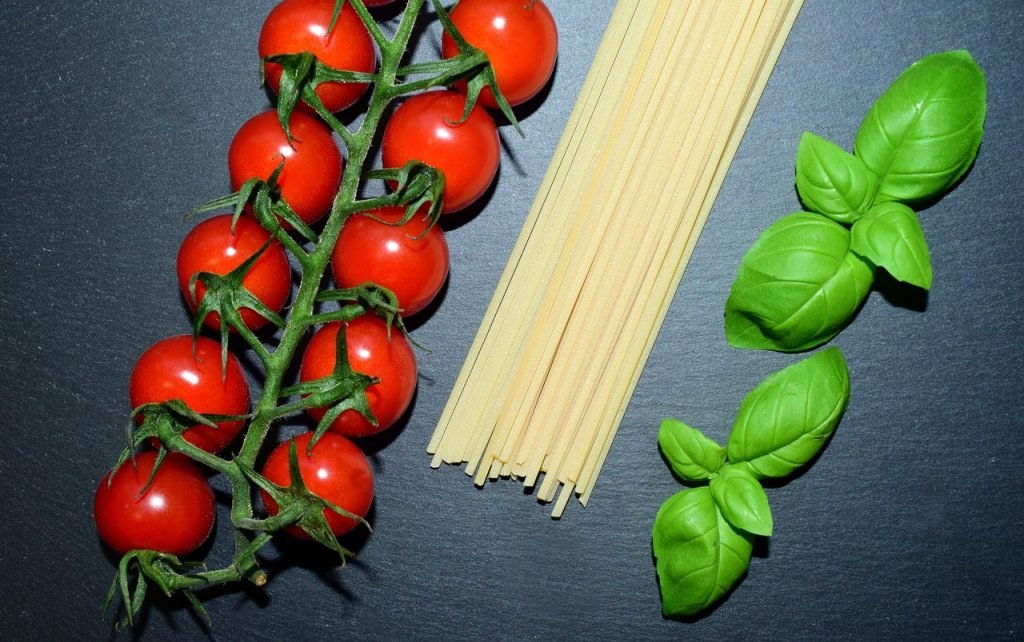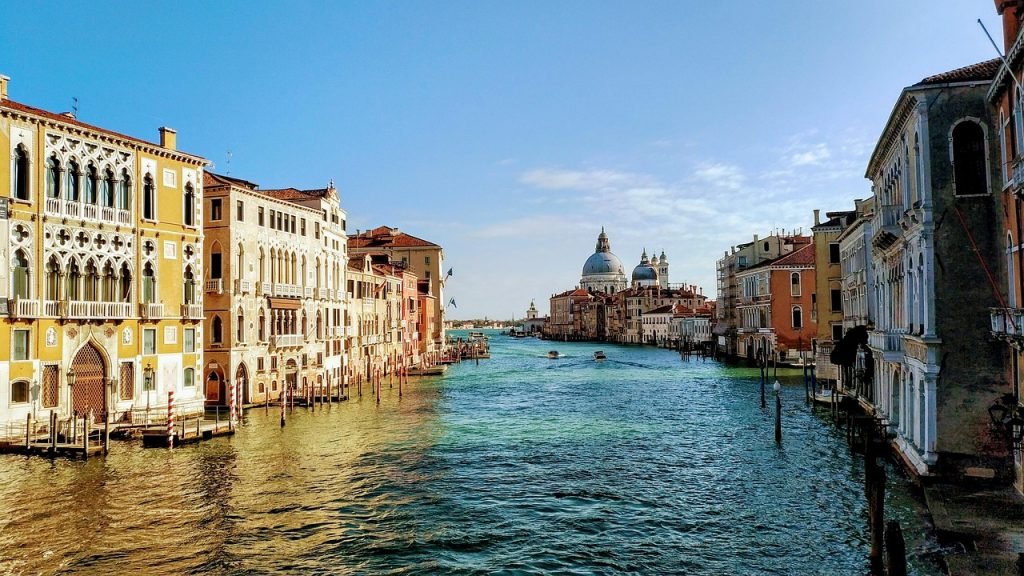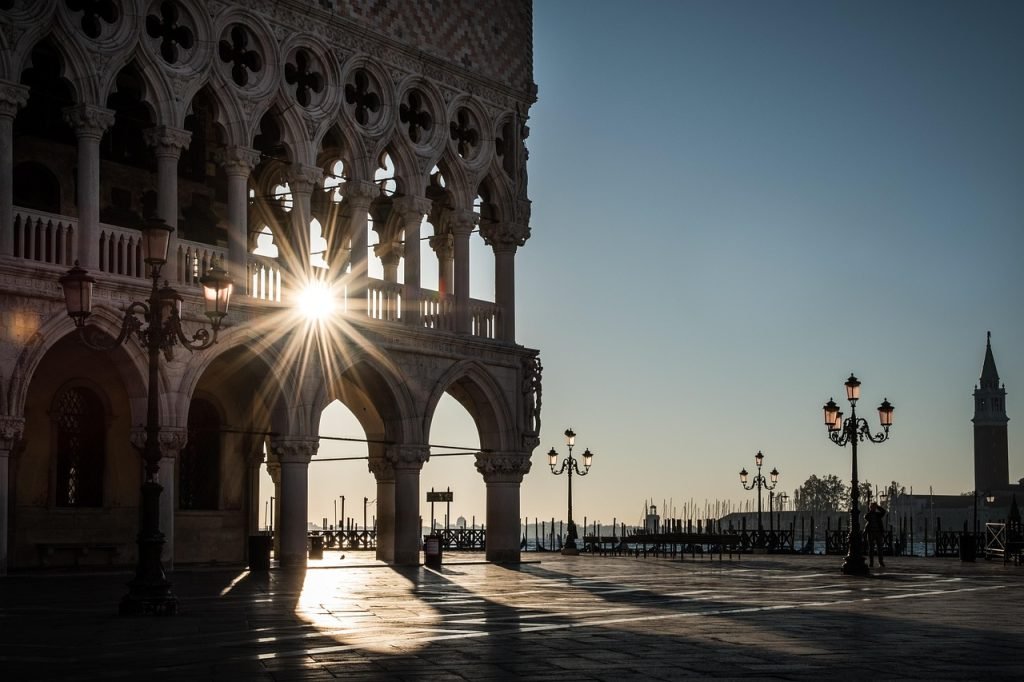Ciao, amici! I must confess something that might surprise you: there is no such thing as “Italian food” in the way most of the world understands it. What exists instead is a magnificent, chaotic, and deeply personal collection of regional traditions so distinct that a Sicilian nonna would barely recognize the Sunday sauce of her Lombard counterpart.
This comprehensive guide represents years of travel, countless conversations with local cooks, and more than a few heated debates about whose version of a dish is the “real” one. But here’s the beautiful truth about Italian cuisine: it’s all real, it’s all authentic, and it’s all worth celebrating.
Important Note: What you’re about to read is merely the tip of the iceberg. Each region deserves its own dedicated exploration – and indeed, I plan to create detailed posts for each one in the coming months. Italian food tradition is so intricate that it varies not just region by region, but city by city, sometimes even neighborhood by neighborhood. Consider this your primer, your invitation to dive deeper into the soul of Italian cooking.
NORTHERN ITALY
Aosta Valley (Valle d’Aosta)
Nestled in the Alps, this bilingual region creates hearty mountain fare designed to fuel alpine adventures.
- Carbonada – A rich beef stew braised in red wine with aromatic vegetables, perfect for cold mountain nights
- Fontina DOP Fonduta – Silky cheese fondue made with the region’s famous Fontina cheese, often served with polenta
- Costoletta alla Valdostana – Veal cutlet stuffed with Fontina cheese and ham, breaded and pan-fried to golden perfection
- Tegole – Delicate almond cookies shaped like roof tiles, a sweet tribute to the region’s architecture
- Caffè alla Valdostana – Coffee spiked with grappa and served in a traditional friendship cup, perfect for après-ski
Piedmont (Piemonte)
The land of white truffles and Barolo wine, where autumn transforms simple ingredients into luxury.
- Agnolotti del Plin – Tiny stuffed pasta parcels filled with roasted meat and vegetables, traditionally pinched by hand
- Vitello Tonnato – Cold sliced veal served with a creamy tuna and caper sauce, a summer classic
- Brasato al Barolo – Beef braised slowly in Barolo wine until fork-tender, served with polenta
- Bagna Cauda – Hot anchovy and garlic dip served with raw vegetables, a social dish that brings families together
- Gianduiotto – Chocolate and hazelnut confection that inspired Nutella, born in Turin’s historic cafés
Liguria
The crescent moon coastline where mountains meet the Mediterranean, creating a unique microclimate perfect for herbs.
- Focaccia Genovese – Dimpled flatbread drizzled with olive oil and coarse salt, often topped with onions or olives
- Pesto Genovese – Basil, pine nuts, garlic, Parmigiano, and olive oil ground by marble mortar and wooden pestle
- Farinata – Chickpea flour pancake cooked in wood-fired ovens, crispy outside and creamy within
- Trofie al Pesto – Hand-rolled pasta shaped like corkscrews, traditionally served with pesto, green beans, and potatoes
- Pandolce Genovese – Sweet bread studded with candied fruits and raisins, a Christmas tradition dating back centuries
Lombardy (Lombardia)
Italy’s economic powerhouse, where rice paddies and alpine valleys create diverse culinary traditions.
- Risotto alla Milanese – Creamy rice colored golden with saffron, traditionally served alongside osso buco
- Cotoletta alla Milanese – Breaded veal chop, bone-in, fried in clarified butter until golden
- Pizzoccheri – Buckwheat pasta with cabbage, potatoes, and melted Valtellina cheese, from the alpine valleys
- Cassoeula – Hearty winter stew with pork, sausages, and Savoy cabbage, Milan’s answer to cold weather
- Panettone – Milan’s gift to the world, sweet bread with candied fruits and raisins, requiring days of preparation
Trentino-Alto Adige
A bilingual region where Austrian influences create unique fusion cuisine in Italy’s Alpine heart.
- Speck Alto Adige – Lightly smoked, cured ham aged in mountain air, served paper-thin
- Canederli – Bread dumplings served in clear broth or with melted butter and sage
- Strudel di Mele – Paper-thin pastry wrapped around spiced apples, reflecting Austrian heritage
- Spätzle – Small egg dumplings, often served with melted butter and cheese, a beloved Alpine comfort food
- Polenta di Storo – Creamy cornmeal from the Giudicarie valleys, cooked slowly and served with local cheeses and mushrooms
Veneto
From Venice’s seafood to the Prosecco hills, this region balances maritime and continental influences.
- Risotto al Amarone – Rich rice dish cooked with Amarone wine, often featuring radicchio di Treviso
- Baccalà alla Vicentina o Mantecato – Stockfish slowly cooked with milk and onions until creamy, or whipped into a mousse-like consistency
- Fegato alla Veneziana – Venetian-style liver with onions, cooked quickly to remain tender
- Bigoli in Salsa – Thick whole-wheat pasta with anchovy and onion sauce, a simple yet profound dish
- Tiramisù – Coffee-soaked ladyfingers layered with mascarpone, despite various origin claims, perfected in Veneto
Friuli-Venezia Giulia
A crossroads of Italian, Austrian, and Slavic cultures, creating a unique culinary identity.
- Prosciutto San Daniele – Sweet, delicate cured ham aged by the mountain breezes for at least 13 months
- Frico – Crispy cheese and potato pancake, comfort food from the mountains
- Gubana – Sweet bread filled with nuts, raisins, and grappa, rolled in a spiral shape
- Jota – Hearty soup with sauerkraut, beans, and smoked pork, reflecting Slavic influences
- Montasio Cheese – Aged alpine cheese perfect for grating or eating fresh, protected by DOP status
CENTRAL ITALY
Emilia-Romagna
The undisputed food capital of Italy, where every dish seems designed to make you weep with joy. And yes, I’m giving you seven dishes instead of five here – forgive my regional bias, but this is my homeland, and I simply cannot choose just five from our incredible culinary treasury.
- Tagliatelle al Ragù Bolognese – Hand-cut egg pasta with the official Bolognese meat sauce, simmered for hours
- Tortellini in Brodo – Hand-folded pasta filled with pork, prosciutto, and Parmigiano, served in golden broth
- Lasagne alla Bolognese – Layers of fresh pasta, ragù, béchamel, and Parmigiano-Reggiano, the ultimate comfort food
- Piadina Romagnola – Thin flatbread from Romagna, grilled and filled with prosciutto, squacquerone cheese, and arugula
- Parmigiano Reggiano – The “King of Cheeses,” aged minimum 12 months, breaking into crystalline fragments
- Prosciutto di Parma – Sweet, buttery cured ham that melts on the tongue, aged minimum 12 months
- Aceto Balsamico di Modena – True balsamic vinegar aged in wooden barrels, thick as syrup and complex as wine
Tuscany (Toscana)
Where Renaissance art meets rustic cuisine, creating dishes that are both elegant and earthy.
- Ribollita – “Reboiled” soup with bread, beans, and vegetables, better the next day as its name suggests
- Bistecca alla Fiorentina – Massive T-bone steak from Chianina cattle, grilled rare over chestnut coals
- Pici Cacio e Pepe – Hand-rolled thick spaghetti with Pecorino cheese and black pepper, deceptively simple
- Cantucci – Twice-baked almond cookies traditionally dunked in Vin Santo dessert wine
- Pappa al Pomodoro – Rustic tomato and bread soup that transforms humble ingredients into comfort
Umbria
The green heart of Italy, where truffles and wild boar roam oak forests above ancient hill towns.
- Tartufo Nero – Black truffles shaved over pasta, eggs, or risotto, earthy treasure from Norcia
- Porchetta – Whole roasted pig stuffed with herbs and garlic, crispy skin concealing succulent meat
- Torta al Testo – Flatbread cooked on traditional stone, filled with sausage, cheese, or vegetables
- Strangozzi al Tartufo – Hand-rolled pasta with truffle sauce, showcasing Umbria’s black gold
- Rocciata – Sweet pastry roll filled with apples, nuts, and honey, a dessert worthy of medieval pilgrims
Marche
The hidden gem between mountains and Adriatic coast, where tradition remains beautifully unchanged.
- Vincisgrassi – Marchigiano lasagna with chicken liver ragù and béchamel, richer than its Bolognese cousin
- Brodetto all’Anconetana – Fish soup from Ancona with 13 types of Adriatic seafood, saffron-scented
- Olive all’Ascolana – Stuffed olives from Ascoli Piceno, filled with meat and fried to golden perfection
- Crescia Sfogliata – Flaky flatbread cooked on terracotta tiles, perfect vehicle for local salumi
- Ciauscolo – Soft, spreadable salami from the Sibillini mountains, perfect on warm bread
Lazio
Rome’s region, where ancient recipes survive in modern trattorias, simple yet eternally satisfying.
- Carbonara – Spaghetti with eggs, Pecorino Romano, guanciale, and black pepper, no cream ever
- Amatriciana – Tomato sauce with guanciale and Pecorino, originally from Amatrice shepherds
- Cacio e Pepe – Pasta with Pecorino Romano and black pepper, technique more important than ingredients
- Saltimbocca alla Romana – Veal escalopes with prosciutto and sage, “jumping in the mouth”
- Maritozzo – Sweet bun filled with whipped cream, perfect with morning cappuccino
Abruzzo
Rugged mountains and Adriatic coast create robust flavors and generous portions.
- Arrosticini – Lamb skewers grilled over grape vine coals, eaten with hands at sagre festivals
- Maccheroni alla Chitarra – Square spaghetti made on wooden frame with steel strings
- Ventricina – Spicy spreadable salami from Vasto, aged in natural casings and perfect on crusty bread
- Confetti di Sulmona – Sugar-coated almonds in every color, traditional wedding favors
- Parrozzo – Cake covered in dark chocolate, shaped like Abruzzo’s traditional bread
Molise
Italy’s second-smallest region, often overlooked but rich in pastoral traditions.
- Cavatelli – Hand-rolled pasta shells perfect for catching sauce
- Capocollo del Molise – Cured pork neck, aged and flavored with wild fennel
- Scamorza – Pear-shaped cheese, often smoked, stretchy and mild
- Torcinelli – Grilled lamb intestines wrapped around herbs, not for the faint-hearted
- Mostaccioli – Diamond-shaped cookies covered in chocolate, spiced with cinnamon
SOUTHERN ITALY
Campania
Naples and the Amalfi Coast, where tomatoes, mozzarella, and pizza were born.
- Pizza Margherita – The original pizza with tomatoes, mozzarella, and basil, invented in Naples 1889
- Spaghetti alle Vongole – Pasta with clams, white wine, garlic, and parsley, sea meets pasta perfectly
- Mozzarella di Bufala – Creamy cheese made from water buffalo milk, best eaten within hours
- Pastiera Napoletana – Easter cake with ricotta, wheat berries, and orange blossom water
- Sfogliatelle – Flaky pastry shells filled with ricotta and candied fruits, architectural marvels
Puglia
The heel of Italy’s boot, where olive groves stretch to horizons and seafood is simply prepared.
- Orecchiette con Cime di Rapa – “Little ears” pasta with bitter greens, garlic, and anchovies
- Focaccia Barese – Topped with tomatoes, olives, and oregano, dimpled and golden
- Burrata – Mozzarella filled with cream and stracciatella, best eaten immediately
- Bombette Pugliesi – Small meat rolls stuffed with cheese and herbs, grilled over trulli coals
- Pasticciotto – Pastry filled with custard, Lecce’s contribution to Italian breakfast
Basilicata
Wild and mountainous, where shepherds’ cuisine creates robust, honest flavors.
- Cavatelli alla Lucana – Hand-rolled pasta with sausage, peppers, and tomatoes, embodying the rustic soul of Basilicata
- Pane di Matera – Ancient bread made with wild yeast, UNESCO protected for good reason
- Peperoni Cruschi – Dried sweet peppers fried until crispy, Basilicata’s edible gold
- Agnello Cutturiddo – Lamb stewed with onions, potatoes, and cheese, shepherd’s comfort food
- Strazzate – Sweet fried dough strips with honey, carnival treats that joy makes
Calabria
The toe of Italy, where ‘nduja and hot peppers set mouths ablaze with flavor.
- ‘Nduja – Spicy, spreadable salami that adds fire to everything it touches
- Spaghetti alla ‘Nduja – Pasta with the region’s famous spicy spread, simple but incendiary
- Cipolla Rossa di Tropea – Sweet red onions eaten raw or caramelized, Calabria’s purple gold
- Soppressata – Pressed salami with hot peppers, aged until perfect balance
- Caciocavallo Silano – Aged stretched-curd cheese with a distinctive teardrop shape, perfect for grilling
THE ISLANDS
Sicily (Sicilia)
The crossroads of Mediterranean civilization, where Arab, Norman, and Spanish influences create unique flavors.
- Arancini – Fried rice balls stuffed with ragù, mozzarella, or other fillings, portable perfection
- Caponata – Sweet and sour eggplant relish with tomatoes, olives, and capers
- Pasta alla Norma – Pasta with eggplant, tomatoes, and ricotta salata, named for Bellini’s opera
- Cannoli – Crispy shells filled with sweet ricotta, the crown jewel of Sicilian pastry
- Granita – Semi-frozen dessert served with brioche for breakfast, summer in a glass
Sardinia (Sardegna)
An island apart, where ancient traditions create flavors found nowhere else on earth.
- Porceddu – Roasted suckling pig seasoned with myrtle, cooked over aromatic wood
- Culurgiones – Pasta filled with potatoes and mint, pleated like wheat stalks
- Pane Carasau – Paper-thin flatbread that keeps for months, shepherd’s sustenance
- Bottarga – Cured fish roe grated over pasta, Sardinia’s caviar from the sea
- Seadas – Fried pastries filled with cheese and topped with honey, sweet and savory harmony
Looking Forward: The Journey Continues
This guide barely scratches the surface of Italian regional cuisine’s incredible depth. Each region deserves hours of exploration, not paragraphs. In the coming months, I’ll be creating dedicated posts for each region, diving deep into local specialties, seasonal variations, and the stories behind the dishes.
We’ll explore how Sicilian cuisine differs between Palermo and Catania, why Emilian tortellini must be folded exactly so, and how altitude changes pasta shapes in mountain valleys. We’ll meet the nonnas who guard ancient recipes and the young chefs reimagining tradition.
Until then, remember this: Italian food is not about perfection or rules, despite what purists might tell you. It’s about connection – to place, to season, to family, to joy. Every dish tells a story, every region sings its own song.
The beauty of Italian cuisine lies not in its uniformity but in its glorious diversity. From Alpine valleys to Mediterranean shores, from ancient grains to modern interpretations, Italy’s food culture remains vibrantly, proudly, beautifully fragmented.
Buon appetito!


